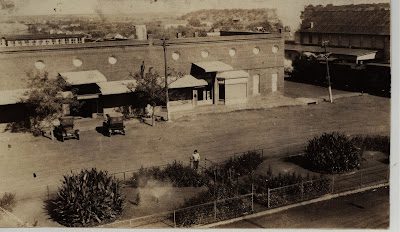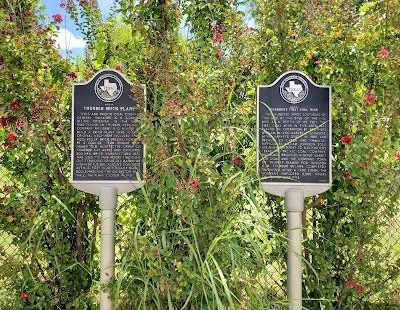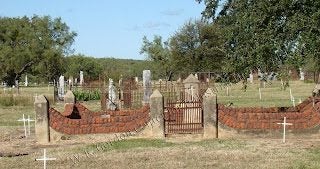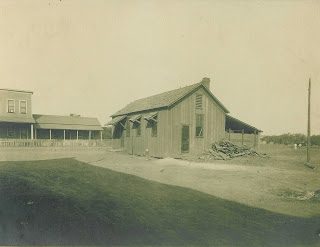In Search of Something Interesting…

In the Search of Something Interesting…
By Kyndall Howard
Sometimes we look at a particular space not realizing that it has changed drastically over time. The Gordon Center understands this change well. As you walk along the sidewalk to the front entrance of the museum and look to the north, you will view a vastly different landscape than you would have a hundred years ago. Currently, Interstate 20 lies parallel to the building, offering a spectacle of cars, whizzing by towards their next destination. Beyond that are trees and pastureland, with occasionally some cattle or other livestock grazing. Rewind one hundred years and the view would be quite different, consisting of houses, home gardens, outhouses, laundry on a line, and people and pets strolling across land devoid of paved roads. As the wheels of time turn, circumstances continuously change various sites from what they once were, to what they’ve become now. Historical markers help bridge this gap between the present and the past.

For nearly two hundred years, Texas has kept a running tradition of commemorating places of historical significance. The first commemorated historical site was commissioned in 1865 by the State of Texas to mark graves at the San Jacinto battleground. For the next hundred years, the Texas Legislator funded projects for various statues and monuments to serve as tributes for various groups, individuals, and sites of historical importance for Texas. They created the Texas State Library and Historical Commission in 1909, with instructions that they collect materials, mark historic sites, and secure the preservation of items related to Texas history. This marked a true beginning for active commemoration of statewide historical markers and monuments.
In 1935, the Texas Legislature created an ambitious program to mark the centennial celebration of the Texas Revolution and independence from Mexico. For the grand celebration, the State placed 1,100 statues, granite and bronze markers and monuments, memorial museums, and exposition buildings around Texas. In 1953, the Texas State Historical Survey Committee (now the Texas Historical Commission) was established to continue the legacy of preserving and commemorating sites of historical significance throughout Texas. They established the Official Texas Historical Marker program in 1962, which encourages heritage tourism by interpreting local and state history and placing markers to help tell specific stories within Texas history.
Within the site of Thurber, Texas rest nine different markers that contribute to the history of the once bustling town. Although the vast majority of the town is no longer visible, these markers can provide those passing by with a way to explore what the region offered in the past. Visiting historical markers, such as these, are an excellent activity to incorporate on long road trips.

Historical markers are not restricted by location or purpose. They can be found along the highway, located at buildings, houses, or landscapes. They can commemorate people, traditions, and places of both large and small historical significance. Historical markers provide insight along a historical point of view which allows the traveler a new outlook on what a space, building, or people contributed to the changing landscape of Texas history.
Still aiming for social distance, yet need an activity to get out of the house? Searching for historical markers could be just the activity for you!
Check out the following resources to discover the Historical Markers of Thurber and places near you!Why Stop?: A Guide to Texas Historical Roadside Markers by Betty Dooley Awbreyhttps://www.thc.texas.gov/preserve/projects-and-programs/state-historical-markershttps://atlas.thc.texas.gov/





